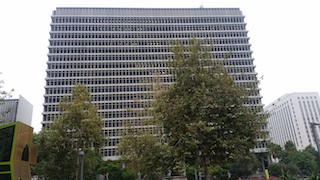Why Have a Motion to Suppress Hearing at “the Prelim?”
As the reader of this website may know, a motion to suppress evidence under Penal Code § 1538.5 may be made two times before trial under most circumstances, once in the trial court and once in the lower court at or before the preliminary hearing (“the prelim”).
Brief Synopsis: The following article lists five reasons to set a motion to suppress evidence hearing on the same day as the preliminary hearing (if the case is a felony) and two reasons not to do so.
The question thus becomes whether one should schedule the hearing on the same date as the preliminary hearing.
We can think of five reasons why it should be set on the same date as the prelim and two reasons why it should not.
 Clara Shortridge Foltz CCB
Clara Shortridge Foltz CCBThe five reasons in favor of scheduling it on the same date are:
- Overwhelm the prosecutor. In our experience, the prosecutor assigned to handle preliminary hearings is often used to very short hearings that are simple and easy (“slam dunks”) because the standard for finding probable cause to hold over the case to a trial court is so low. The prosecutor assigned is thus often young and customarily spends a great deal of time coordinating witnesses rather than appreciating the subtleties of the evidence and the facts. When faced with a motion to suppress that cannot rely upon hearsay, the prosecutor becomes flustered and a sense of panic sets in. When the hearing expands to consider more than just the elements of the crime and affirmative defenses, the prosecutor is on unfamiliar ground.
- Expand the scope of the preliminary hearing. Normally, in a preliminary hearing, Penal Code § 866 applies, which limits defense counsel to presenting only evidence that goes to an affirmative defense (self-defense, necessity, alibi, consent, i.e.), negates an element of the offense charged or impeaches prosecution evidence. However, once combined with a hearing on a motion to suppress, the defense can introduce evidence that goes to the totality of the circumstances to finding probable cause to arrest, reasonable suspicion and the scope of a lawful search. This can involve a deep look at the propriety of the officers’ conduct, their credibility and require testimony of defense witnesses about police misconduct.
- Reduce the prosecutor’s reliance on hearsay evidence. This may be the most significant benefit of having a motion to suppress hearing at the same time as a preliminary hearing. Normally, a police officer qualified under Proposition 115 may testify to hearsay statements during a preliminary hearing. Penal Code § 872. However, if a suppression motion is being considered, hearsay is a proper objection. This means the prosecution will need to introduce witnesses at the hearing that otherwise may be unavailable or at least difficult (or reluctant) to come to court. Such witnesses may become hostile to the prosecution, which may be stressed-out over trying to bring more than a single, cooperative police officer to the hearing. Indeed, such witnesses may ask the prosecution many questions about why they must miss work, why the prosecution can’t proceed without them and whether they will be paid for their time. Thus, the witnesses may not be prepared by the prosecution and may give defense-friendly testimony.
- Increase chances of excluding an important prosecution witness later. If a prosecution witness that is vital to a search and seizure issue is not presented at the preliminary hearing, and the hearing is held without his or her testimony, defense counsel can ask to exclude that witness later in the case (at a second motion to suppress hearing, i.e.) unless the prosecution can show he or she could not have reasonably been presented at the preliminary hearing. This can be a big advantage to the defense.
- Show the prosecutor more of the defense case. The preliminary hearing is not trial, but our clients usually thirst for a more thorough presentation of the issues at the preliminary hearing. We agree that with a deeper look at the evidence, the prosecution usually plea bargains more cooperatively and in a more meaningful manner, so having the two hearings at the same time can facilitate this.
There are two big reasons not to schedule the motion on the same date as the prelim, specifically:
- If a defense witness is found to lack credibility at the hearing, that finding is binding upon the trial court later. If an important witness to the success of a motion to suppress has credibility issues and the judge at the preliminary hearing makes a finding on the record that the witness had poor credibility, that finding is binding upon the trial court judge later and this can undermine plea bargain discussions.
- If the defense is rushed into such a hearing and fails to present certain evidence or witnesses, the trial court judge may bar their introduction later. This is usually not a problem, but if a witness upon whom the defense relies heavily does not appear at the preliminary hearing (it is wise to subpoena even friendly witnesses), the prosecution can move to exclude that witness from testifying later in the case, including at trial, unless the defense can show it could not have reasonably presented the witness at the preliminary hearing.
For more information about preliminary hearing and motion to suppress issues, please click on the following articles:
- What Is a Preliminary Hearing?
- Ten Motions That May Be Made at a Preliminary Hearing
- What’re Some Affirmative Defenses for a Preliminary Hearing?
Contact us.  Clara Shortridge Foltz CCB
Clara Shortridge Foltz CCB